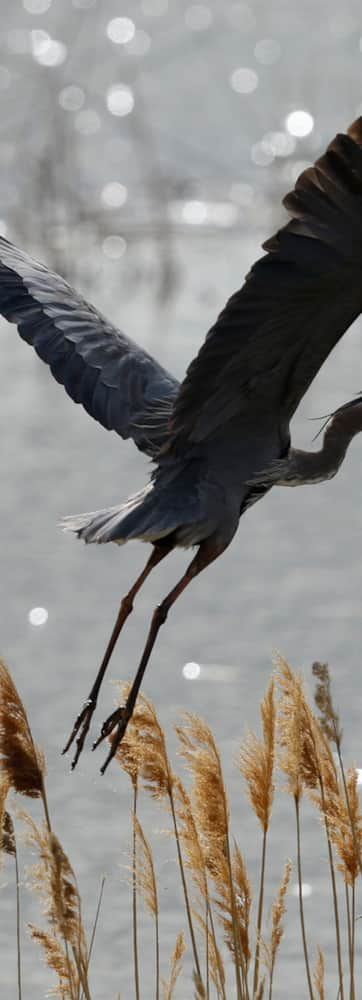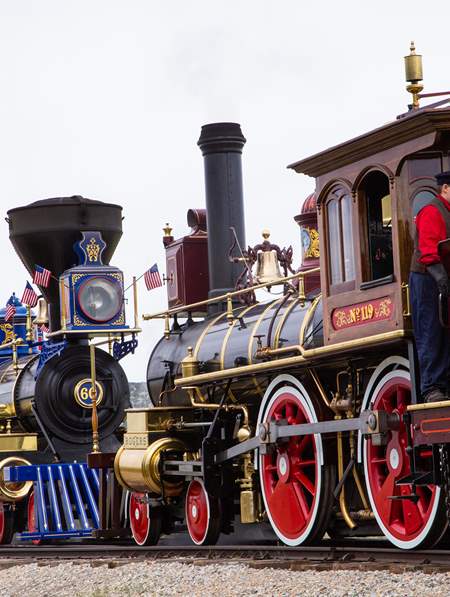
Bear River Migratory Bird Refuge
Building an Ecosystem
Standing among the symphony of bird calls and lush wetlands, it’s hard to believe, but there was a time when this vibrant ecosystem was nearly dead. During the 1920’s upstream irrigation diversions of the Bear River had reduced the surrounding wetlands down to only a few thousand acres of land. The lack of wetland forced the annually migrating birds to gather in unhealthy numbers in limited space. They were then hit with disastrous avian botulism outbreaks. Two million birds died in 1910 and 1.5 million more died in 1920. Congress designated the area a National Wildlife Refuge in 1928. Since then the government along with many concerned local citizens worked together to build 50 miles of dikes and canals to make five impoundments to restore 25,000 acres of freshwater wetland.
Again in 1983, the refuge was devastated. The Great Salt Lake flooded inundating the wetlands with salt water and decimated the structures of the Bear River Migratory Bird Refuge. When the levels of the lake finally receded in 1989 the roads, dikes and water control systems all had to be rebuilt.
Now, the Bear River Migratory Bird Refuge is one of the best birding destinations in the entire world. Located only miles from Brigham City, Utah, it’s a perfect way to spend a day visiting the Wildlife Education Center, exploring the wetlands and waterfowl habitat along the auto tour route, fishing the Bear River and check out other nearby attractions.
Guide to the Refuge
The refuge has grown to 74,000 acres of pristine wetlands. It is the largest freshwater component of the Great Salt Lake ecosystem and is considered one of the most valuable wetland areas of the Intermountain West (Read: Great Salt Lake Needs Your Visit). The refuge is located on the edges of both the Pacific and Central Flyways and is a key spot for birds in both. Over 200 bird species have been identified in the refuge and nearly 70 species use it to nest. How many species will you identify on your visit? It’s a great way to add new common and rare birds to your list!
Begin your visit with a stop at the James V. Hansen Wildlife Education Center. Inside you will find educational exhibits and resources as well as knowledgeable staff to answer any questions. The half-mile interpretive nature walk that begins at the Center and loops you through the surrounding wetlands is guaranteed to offer you sightings of birds and good views of the natural surroundings.
The Auto Tour is located 12 miles west of the Education Center and is a one-way drive that leads you through the wetland and marshes of the Bear River Delta. It can take anywhere from 1.5 hours to half the day. You are sure to see pelicans, ibis, plovers, stilts, teals, and swan. The Auto Tour is open from sun-up to sun-down. The best time for birding is early mornings and sunset. For helpful insights before driving the tour be sure to download the Audio Auto Tour from the refuge’s main website. The refuge also offers guided trips along the route by a ranger or naturalist most Saturdays throughout the summer.
Fishing the Bear River and the canals is a great way to split your time in the summer and fall months. Carp, bullhead, and catfish are the most commonly caught fish inside the refuge. Get a current copy of hunting and fishing regulations at the Education Center.
Appreciating Nature
Why visit Bear River Migratory Bird Refuge? It's all about losing count of just how many different bird species you saw in one day; it's about getting up and out early in the morning or heading out around sunset to increase your sightings.
Even better, nearby Brigham City makes it easy to plan for those early morning visits or if you should stay past twilight. The city offers a range of great lodging, local restaurants and small-town warmth right off I-15.
Birders will especially love this spot with its wide variety of feathered friends. But, you don’t have to be a bird enthusiast to have a wonderful time pointing out the different species living on the refuge — it can be helpful to bring a bird identification book. If birds aren’t your thing, you can still enjoy by grabbing a fishing rod and heading out for some time on the river or simply taking in the view of the Great Salt Lake and the Wasatch Mountains to the east.
Grab your binoculars, water and a snack and get ready to watch the sunset over the Great Salt Lake with your new avian friends at the Bear River Migratory Bird Refuge.
Visitor Information
The visitor center of the Bear River Migratory Bird Refuge is five minutes from Brigham City's downtown.
The Wildlife Education Center is open Monday through Friday from 8 a.m. until 5 p.m. and Saturdays from 10 a.m. to 4 p.m., and is closed Sunday and all federal holidays.
There are fees associated with using federal recreation lands. Please visit the National Wildlife Refuge System site for more information about passes.
Parking is available, but only in designated areas and this is strictly enforced. Hunting and fishing are allowed during the proper season and with the proper permits.
.jpg?w=450&h=597&mode=crop&quality=65)


